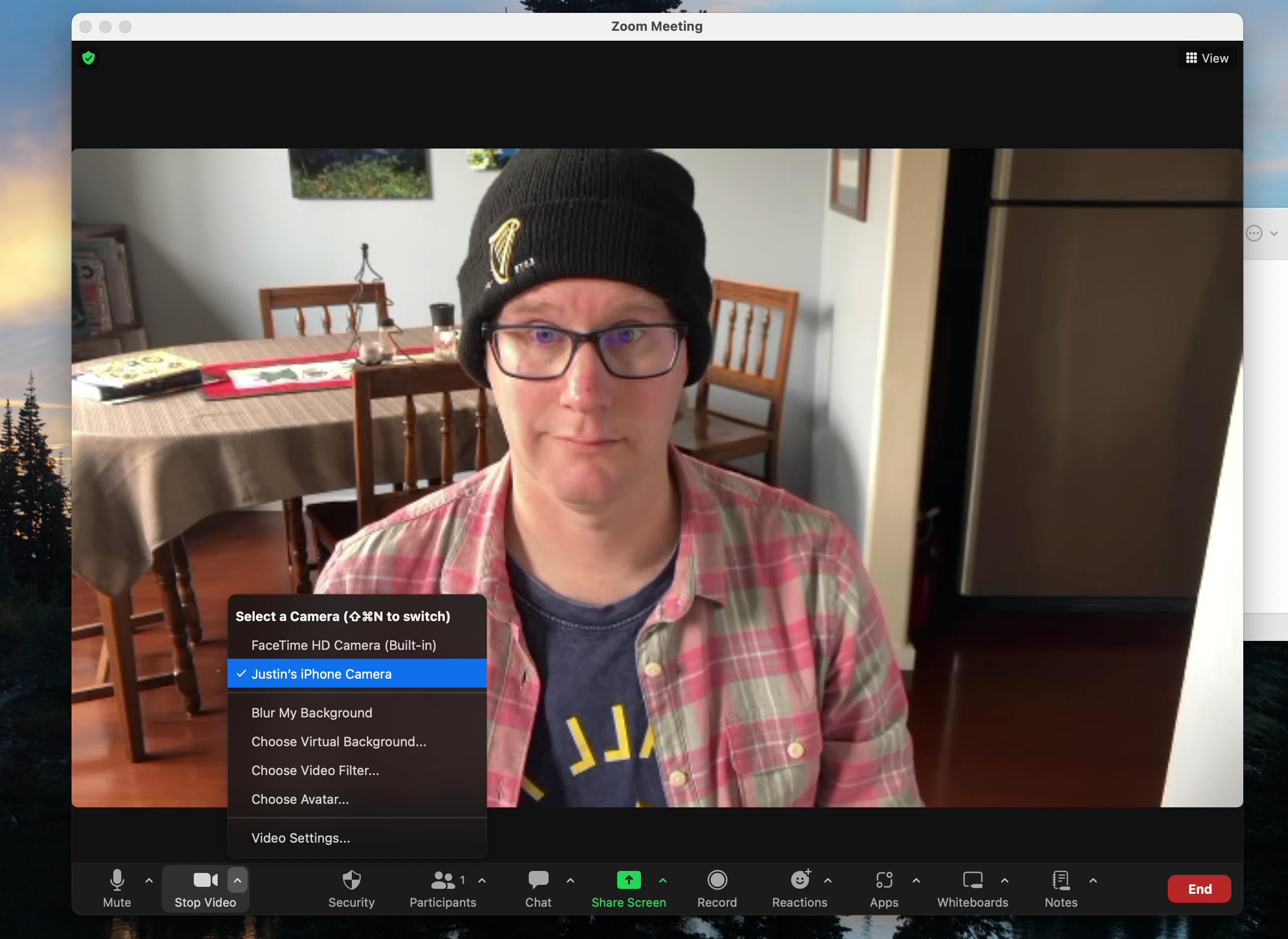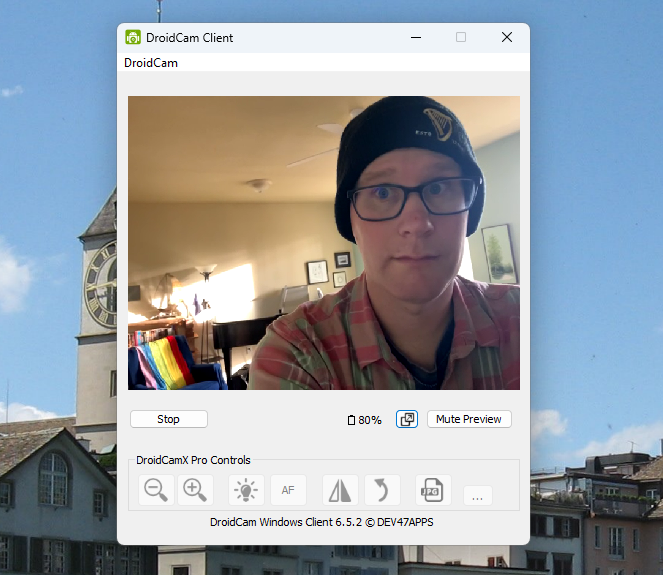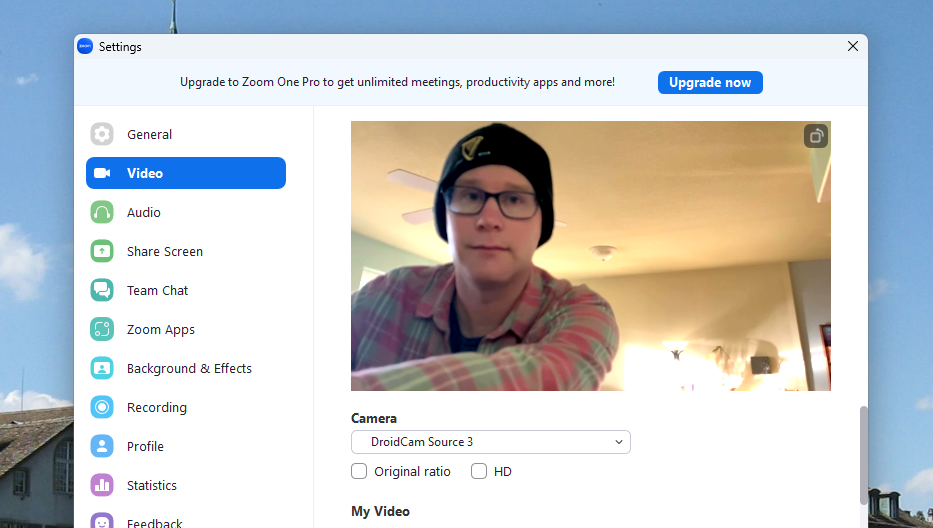There are some decent cheap webcams on the market, but you can go the DIY route and use your phone instead. It takes a little bit of setup, but modern smartphones offer impressive image quality without any extra expenditure.
We all know that built-in webcams look terrible, and that phones take pretty great pictures, so it makes sense to use your phone’s fantastic camera for video calls on your computer. Apple already built this feature into the iPhone, if you have a Mac. Windows users, meanwhile, can use a third party application to turn either an iPhone or an Android phone into a wireless webcam.
Use Your iPhone as a webcam for you Mac
If you’ve got both an iPhone and a Mac you can use the Continuity Camera feature offered by Apple. All you need is an iPhone running at least iOS 16 and a Mac running macOS Ventura (also known as macOS 13) or later. Both devices need to have both Bluetooth and WiFi turned on and both devices need to be signed into the same Apple ID.
In any application that uses the video camera, simply select your iPhone as the source. For example, on Zoom, click the arrow beside the video button and then select your iPhone as the camera. It works right away, and you will notice the quality difference.

Use an iPhone or Android phone as a webcam for you Windows or Linux computer
Windows users don’t have an official alternative to Continuity Camera but Droidcam is the next best thing. This application works with both iPhone and Android phones, and allows you to use those phones as a webcam on a Windows or Linux computer. You will need to install the app on your phone and on your Windows machine. Make sure both devices are on the same WiFi network, then open the app on your phone. You will see an IP address; open the app on your computer and type the IP address there. The camera should start working.

Minimize this window then use your video call app of choice. You will see DroidCam listed as an option for both the camera and microphone.

I tested this with Zoom, Google Meet, and Jitsi; it worked well for all of them. The free version only offers standard definition quality. You can upgrade to the pro version to get high definition and a few nice-to-have features including brightness adjustments and auto-focus. The paid upgrade costs $4.99 per year as a subscription or $14.99 as a one-time payment. Alternatively you can watch an ad to get one free hour of HD quality.
A few things to keep in mind
You can position the phone however you want during the meeting, and even pick it up and move around a little bit. A dedicated phone tripod doesn’t take up much room and provides a solid, adjustable base. There are dedicated stands that sit the camera on top of a monitor, but you don’t necessarily need them. I use a business card stand to hold the phone in place, which works great. A car dash-mount for your phone could also do the trick, in a pinch.
One more thing to note: using your phone as a camera uses up the battery on your phone. It’s probably a good idea to plug it in, either to your computer or a dedicated charger, while you’re using it.





